Designing an aquascaping hardscape
The » hardscape » is the term used in aquascaping to represent the inert part of the aquarium decor. Composed of rocks, roots, wood and the various elements that make up the soil, it helps define the structure of the décor. In other words, we could also have called it the set model.
The inert décor – or hardscape – will lay the foundations for the entire future aquascape.
The hardscape is an essential stage in the design process, laying the foundations for the future aquascape.
Using elements such as roots and rocks, we’ll define the overall shape of the scenery, before working out the details.
In the next step, this hardscape will serve as a support for the planting. Some aquascapers prefer hardscape composition, while others prefer planting. But one thing is certain: one of the objectives of a successful decor is to achieve balance.
between these two parts, as too much vegetation can potentially drown out a hardscape and its details. Conversely, too little vegetation will give the impression of an unfinished set.
The rules
A number of basic rules and principles will help you understand how to create a hardscape, how to give it meaning and an appropriate look. The overall shapes of a composition will help balance a setting, while the various notions of landscape construction will give it depth. Some of these notions become
The inert décor – or hardscape – will lay the foundations for the entire future aquascape.
almost innate to seasoned aquascapers, who will hardly need to worry about it. On the other hand, they will be very useful for beginners who need a concrete basis for creating their first hardscapes.
The shapes
To define the overall appearance of the final layout, we can choose one of the following shapes:
– Convex shape: curving inwards, this type of shape allows the decoration to spread out to the sides, sometimes even resting on the side windows.
– Concave shape: curving outwards, this is where we’ll be referring to more streamlined designs, with clearer sides and a focus on central compositions. This shape is generally more practical for aquarium maintenance.
– Triangular shape: starting at the top and ending at the opposite end of the tank, this shape frees up space for future residents. It also gives off a side, depending on where the aquarium is placed in a room. Finally, the practical aspect lies in the fact that the equipment can be easily concealed (filter suction pipe, heating element, even technical column…).
Here, a concave composition.
Here’s a triangular shape…
This type of hardscape is known as a convex hardscape.
… Illustrated with a line in this photo.
Building a landscape
Perhaps you remember your drawing lessons, especially the one in which you were taught to draw a landscape?
To do this, your teacher has no doubt used various definitions to construct a landscape. A painter uses it to draw his landscape, a photographer takes it into account to find the best angles before taking his picture… Why shouldn’t the aquascaper also use it to build his decor?
The most important definition of all is « perspective ». It’s the latter that will give the impression of depth to your decor. A successful perspective guarantees an ideal base for your final decor.
The perspective
In order to materialize a perspective, we will use several other useful definitions:
– Horizon line: higher, and sometimes much higher, than the foreground, this background line allows you to position the horizon line of a landscape at the back of the aquarium. From one style to another, we’ll give it more or less height.
– A focal point will be the important element that catches the eye first. It’s a visual contrast. You need several in a composition, and preferably an odd number, to avoid falling into a form of symmetry. A large rock or root in the foreground does the trick.
Perspective gives the hardscape a sense of depth.
– The vanishing point is the place that appears furthest from your background. It must give the viewer the impression that the set has a continuation on the other side. However, it’s too small a suite to be perceived. It is usually placed on the horizon.
– Vanishing lines: linking the various focal points up to the vanishing point, these lines will give your set a sense of direction.
– The golden ratio: thanks to a precise calculation rule, the golden ratio is used to define harmonious proportions in geometry. Let’s remember that the proportion of 1 to 1.618 is retained, top or bottom, left or right, thus offering four possibilities, four possible positions for placing it. It’s usually at one of these points that the vanishing point of our perspective will be positioned.
Let’s use all these definitions to illustrate perspective drawing.
White sand from the Loire Valley has a natural look. In particular, it can be used to draw a path.
The Seiryu rock has been one of the most popular for many years now.
Decor elements
Among the various elements making up the hardscape, we’ll be using inert yet natural elements. Forget anything to do with artificial decorations (wrecks, planes, Buddhas, cottages…) because, as a matter of principle, we will only use rocks, wood, roots…
The floor
The floor can be composed of several parts:
– The underlay: the first thing we’ll usually find is an underlay to raise the horizon line for sets that are intended to be a certain height. This underlay must support the weight of the structure, including any rocks. A suitable pozzolan (crushed lava rock) is particularly suitable for this purpose. With a grain size larger than that of a nutrient soil, it will promote water circulation while ensuring soil stability and, as a bonus, it’s an excellent support for bacteria. Pozzolan can be used right at the bottom of the aquarium to create an even slope, or in bags to lift elements forward from time to time.
– Technical soil: the nutrient soil chosen is generally a technical soil because, in addition to being rich enough to feed demanding plants, it doesn’t need to be covered, favors plant rooting and, lastly, plays on water parameters. Thanks to a chemical process, it will stabilize your aquarium’s pH and reduce its hardness.
– Sand: there are several types of sand, and even sand of all colors. Bear in mind, however, that the setting is intended to be natural, so we’re going for a white sand, like Loire or river sand. Its purely aesthetic function is to brighten up a forecourt or outline a path. The latter is often used in aquascaping, as it’s the easiest way to draw the eye from the front of the aquarium to the vanishing point (see above), amplifying the perspective effect.
– The detail: rock-colored stone chips are used to create a visual transition between the rocks and the open areas. We’ll find them, for example, on a path at the foot of a « cliff », making the transition between the two parts more natural.
The rocks
Depending on the type of décor you’re looking for, whether in the Aquarium Nature or « diorama » category, we’ll choose our rocks and roots according to the styles and proportions needed to fulfill our visual objective.
The source of many decorative styles such as Iwagumi or Mountainscape, rocks can also be used for more practical purposes, such as weighting down roots.
Stones should be chosen according to their appearance and characteristics, as some can be calcareous or even ferruginous. Be particularly careful with rocks found in nature, which should be tested for their limestone content.
There’s another, more visual criterion to take into account: while we usually only use one type of rock for a given aquarium, they don’t all come from the same vein, from the same place. In practical terms, this means that some are more structured than others, and not all have exactly the same color. However, these constraints can be used to advantage by using more structures in the foreground, or dark rocks in the background, giving an extra line of scale.
The most popular rocks for aquascaping are the « Seiryu Stone » or « Mini landscape », ideal for representing a mountain range; the ochre-colored « Ohko Stone », also known as the « Dragon stone », highly structured by its natural decomposition, resembling wood for the most imaginative; and lava rock, which comes in a variety of natural-looking colors, and can even be found in central France. The Glimmer rock is becoming increasingly visible.
Combination of Talawa roots and « Dragon stone » vertical rocks. These are also known as « Ohko Stone ».
Glimmer is a rock that is becoming increasingly popular in aquascaping.
Spider wood » is now a must-have.
The roots
They come in many names and varieties. They’re more likely to be found in settings with a forest, wilderness or simply natural feel.
Roots are easier to use than wood, as branches are normally covered with bark that will rot in water. This could quickly lead to algae outbreaks, if left unchecked.
As with rocks, roots and wood taken from the wild carry a risk that needs to be taken into account. Forget all softwoods (pines, firs…), some woods are also toxic (ivy, lime-treated vines…). It’s a good idea to boil or degorge these roots before using them whenever possible.
This will remove their impurities and some of their tannin, and they’ll probably even be weighted down before they’re used in the aquarium.
The best-known of these is spider root, which is also known by a variety of names such as « Spider Wood », Asia root, rare red vine… However, we can also use the classic roots of Mangroves, Mopani, River Wood, Jungle and so on.
A final variety in the Treescapes category is the Bonsai tree. We are within the tolerance limit for products considered natural, as this « tree » is made from several woods and resin, particularly for the trunk.
The arrangement of rocks and roots
Now that you’ve got all these elements down, it’s time to find the best possible layout.
Working on perspective, setting up drawing lines… it’s time to apply everything we’ve seen previously.
A good deal of handling will undoubtedly be required, and a hardscape tray may prove useful. A wooden crate or cardboard box the size of the tank, filled with sand, will do the trick.
Pay attention to the direction of the elements and their interlocking, because when you place several rocks side by side or the receding branches of several roots, you need to ensure that these elements follow the same logical direction. Otherwise, you’ll lose a lot of naturalness. And it’s often this naturalness, with seamless transitions between hardscape elements, that will make or break your final set.
Your creativity will be put to the test, and sometimes your experience too. Sometimes you’ll need to test several layouts before finding the best possible hardscape layout. Whichever you like best.
With the Bonsai tree, we’ve reached the limits of natural decor, as this type of element is manufactured.
A « workbench » lets you design your hardscape, make it, unmake it, over and over again. Before you reach that final moment when, at last, you think you’ve got the decor of your dreams!
In fact, we can formalize and standardize the subject as much as possible, but the main objective is to make sure you like the composition!
Your creativity will be put to the test, and sometimes your experience too. Sometimes you’ll need to test several layouts before finding the best possible hardscape layout. Whichever you like best. In fact, we can formalize and standardize the subject as much as possible, but the main objective is to make sure you like the composition!
The hardscape, and everything else…
We hope we’ve shed some light on the subject of hardscapes, and that you’ll be able to get to grips with this complex but fascinating subject!
This is just one of the many topics covered in our training courses on the more global theme of aquascaping.
For more information, please contact us directly at contact@aquarilis.fr



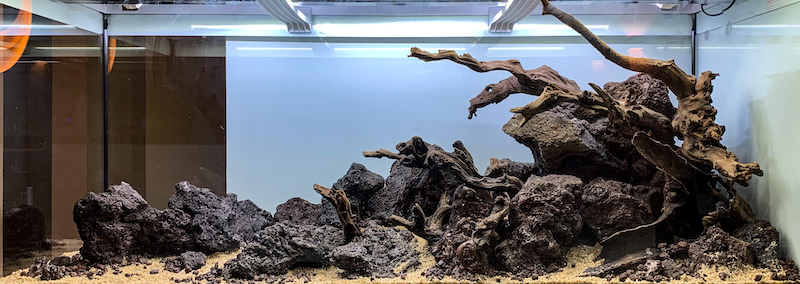
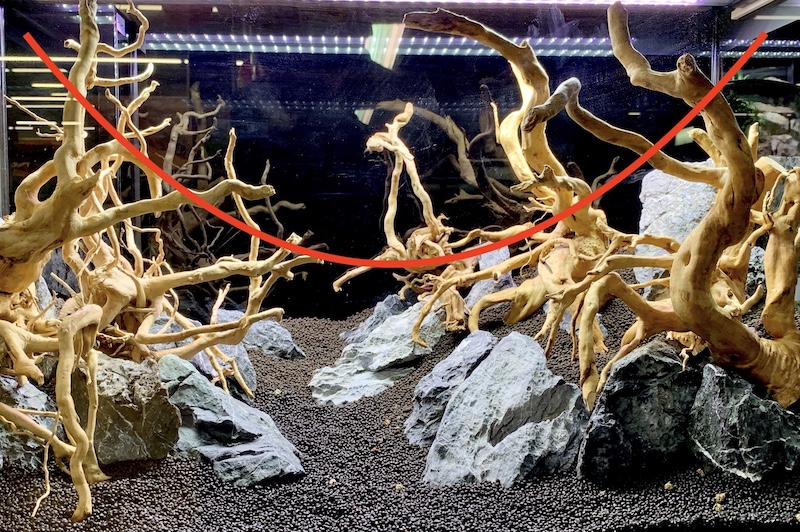
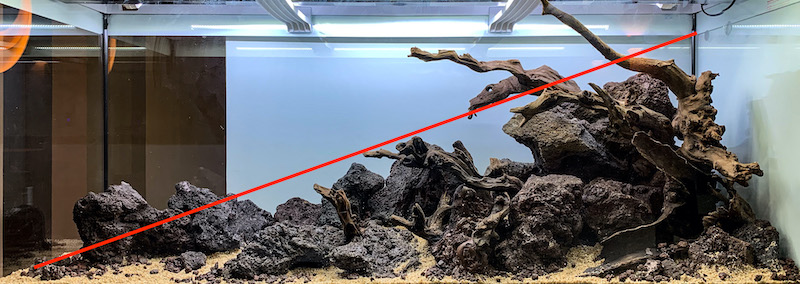




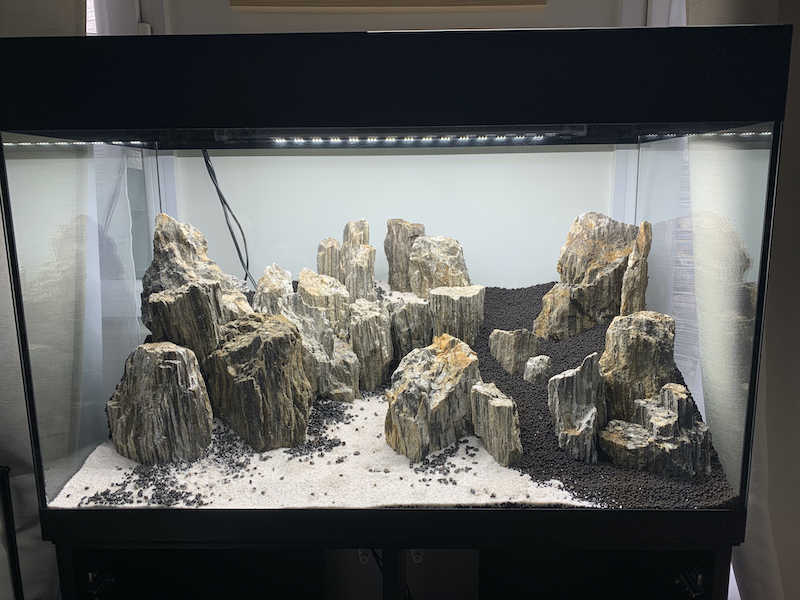

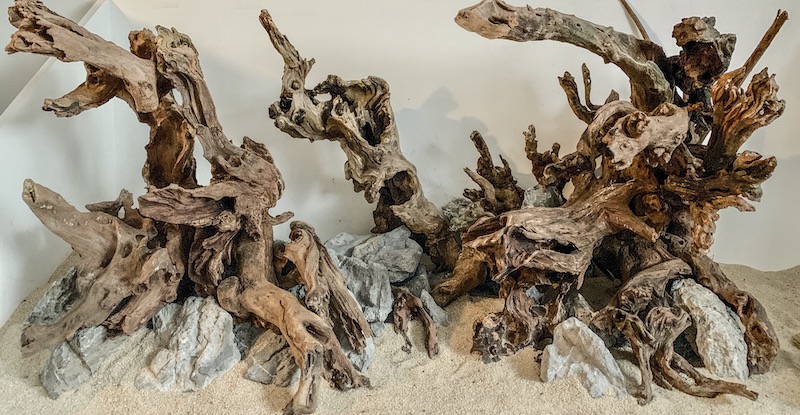
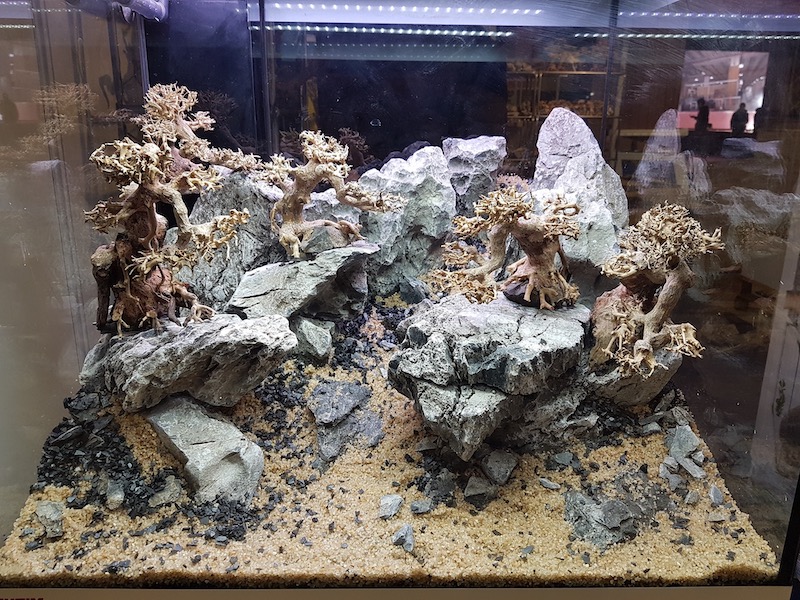
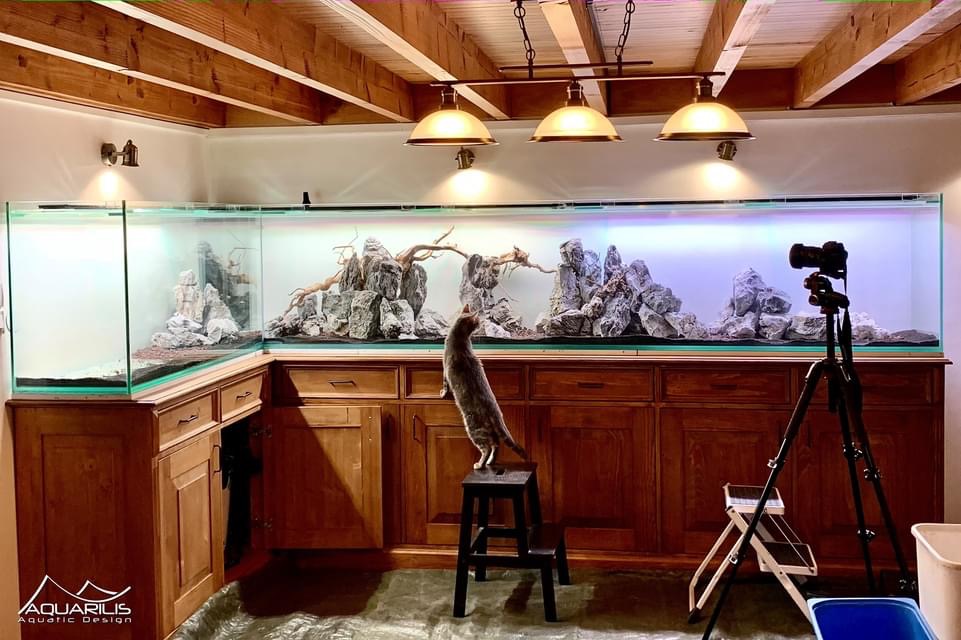



Laisser un commentaire
Rejoindre la discussion?N’hésitez pas à contribuer !